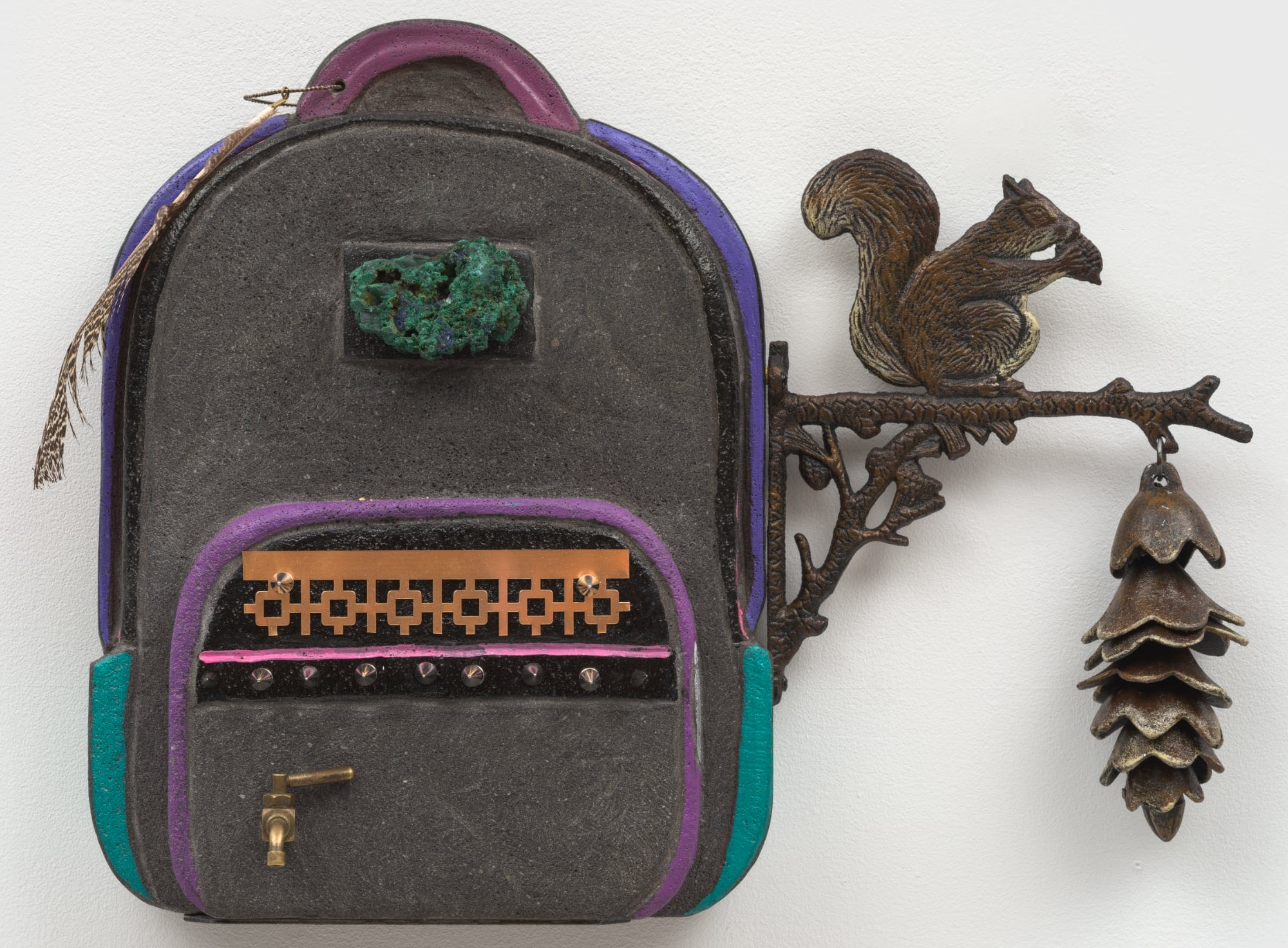This post was originally published on Colossal
With the region’s smallest geographic footprint, El Salvador boasts the second-highest number of volcanos in Central America. The country is located on the Ring of Fire, a tectonic band that encircles the Pacific Ocean and houses about two-thirds of all volcanos worldwide. Given its eruptive landscape, much of the soil is rich in ash.
In a series of sculptures, Guadalupe Maravilla (previously) draws on his home country as he sculpts backpacks and enlarged hands from volcanic rock. The works reference the artist’s migration from civil war-era El Salvador as an unaccompanied minor, a traumatic journey that remains a central theme in his practice.

A trio of pieces, titled Dream Backpacks, refers to “how we immigrate to the U.S. by land and carry everything we own in a backpack in search of the American Dream,” Maravilla writes in a statement. Embellished with pink, purple, and blue paints, the poignant works display a variety of charms—feathers, a small cat figure, and metal details like a spigot—the artist collected while retracing his childhood route.
Other works take the form of a burly hand cradling smooth shapes featuring pieces redolent of retablos, small devotional paintings often invoking protection during times of hardship. Lightning bolts, stars, and snakes recur throughout the compositions, along with references to the artist’s colon cancer diagnosis, which he has long linked to the trauma he suffered as a child.
December 12 is special to Maravilla and titles one recent work featuring linked wishbones, crystals, and the children’s rhyme “Sana, sana, colita de rana,” which translates to “heal, heal, little frog’s tail.” As Maravilla shares on Instagram, “On 12/12/12 I found out I had cancer. 12/12/13 I overcame cancer. Today, I am starting a new chapter 12/12/24 with a special meditation.” Similarly, a cake with a “0” candle appears in “Luz y Fuerza,” which resembles a pastry the artist once used to celebrate both his birthday and what he considers his rebirth as cancer-free.
Citing resilience amid struggle, Maravilla’s sculptures call on healing and regeneration. Volcanic ash, after all, is one of the most potent natural fertilizers and a key factor in sparking new growth.
Maravilla is represented by P·P·O·W Gallery in New York, where you can find more of his work.


retracing the artist’s original migration route, 16 1/4 x 12 x 4 3/4 inches






Do stories and artists like this matter to you? Become a Colossal Member today and support independent arts publishing for as little as $7 per month. The article Guadalupe Maravilla’s Volcanic Rock Sculptures Invoke Resilience and Regeneration appeared first on Colossal.





0 Comments